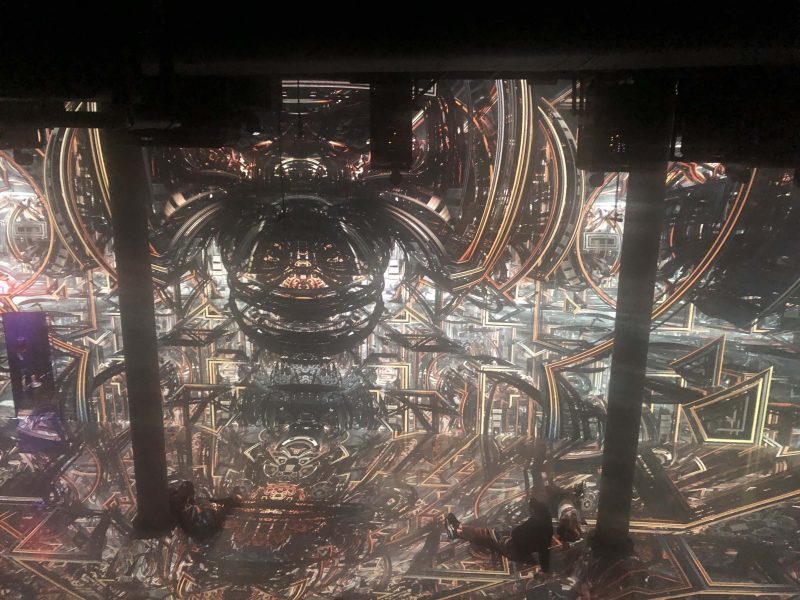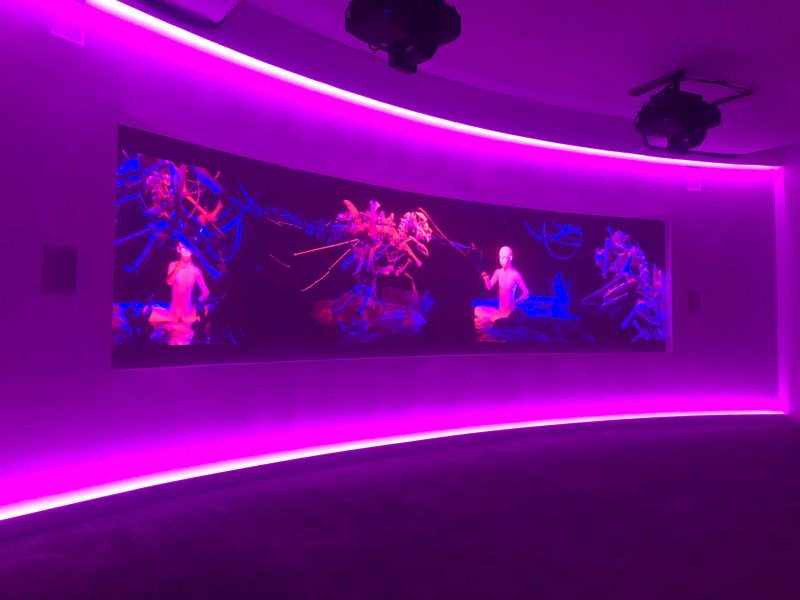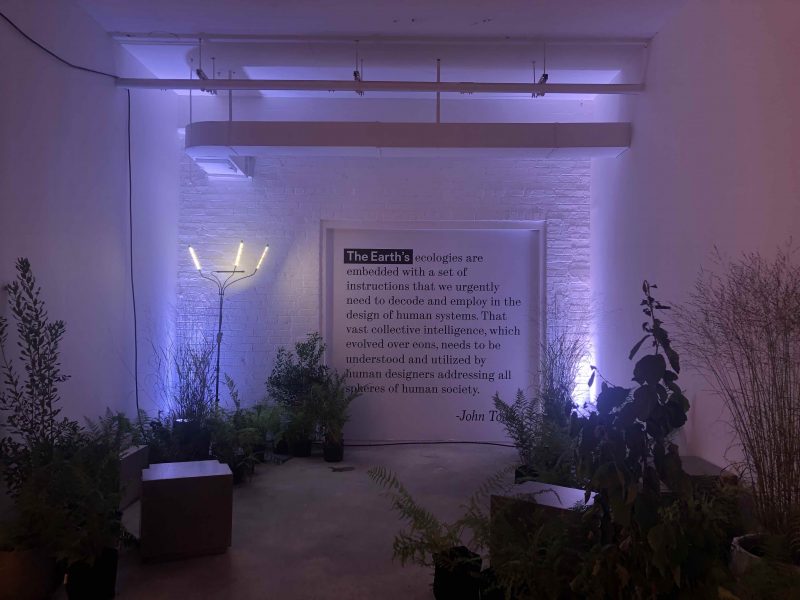Speculative Fabulation in Immersion Installation Work
Posted on October 22, 2021
In the recent years there has been an emergence of immersive art installation and experiential exhibits which have utilized projection technology to reimagine classical artworks or to present new digitally imagined stories. Through engaging multiple senses, immersive entertainment experiences are able to evoke emotions and responses that are distinct from traditional experiences of art consumption. In an age of technology and digital social connection, this form of media consumption and entertainment has a specific appeal to younger generations who may not be as inclined to consume art in galleries and museums in a traditional sense of viewing. In a study by the American Association of Museums, the critical age for children to become lifelong museum-goers and advocates is 5 to 9 years old (Museums and Society: 2034, pg. 15). The new challenge presented to artists and exhibit designs is to capture the shortening attention span of children as well as adults of the digital age. Appealing to younger generations to care about social issues and art, and making art more accessible and less intimidating provides a strong case for the benefits of this method of presentation. However how we choose to define effectiveness and intention if these allow viewers to stay with the trouble is complicated in the intrinsic capitalist model in which it is reliant.
The effectiveness of challenging the typical art-viewing attention span is evident for me when I have visited exhibitions of this nature. I found myself spending hours staring and listening to these exhibitions whereas in a traditional gallery I may only spend a few minutes even if I really enjoy the piece. It presents the question, is time a relevant factor to judge a piece’s effectiveness? And how does one define effectiveness in art? Staying with the trouble is hard to measure and the degree to which the artwork or exhibition impacted the viewer’s perspective and emotional reaction.
—
“Any sufficiently advanced technology is indistinguishable from magic.”
-Arthur C. Clarke, science fiction author
—
Case Study: Undercurrent at The Jefferson


Undercurrent was an exhibition which brought together over 40 musicians, artists, creatives, and nonprofit partners in to produce a temporary series of audiovisual art installations responding to the climate crisis we are facing. Combining science fact and speculative fabulation in creating various narratives about the future of climate resonates with the idea of staying with the trouble as presented by Donna Haraway. This unexpected collaboration between science and musicians emphasizing the extent of this particular wicked problem.
The exhibits are presented in a visually engaging and enjoyable experience makes me wonder about the effectiveness of staying with the trouble when it is romanticized into an enjoyable experience. Although presenting complex issues and wicked problems, the idea of education versus entertainment struck me in these exhibits.
As with any design, there is an inherently political nature to immersive art installations, and Undercurrent emphasizes their political stance in terms of the climate crisis. There are other underlying political narratives as well, in both the form and the subject matter itself.
Ecoism is the most present in the speculative fabulation storytelling medium. Design is often used as a “spectacle of concern” without an agenda to actually address climate change aside from public awareness. While this is a valuable intention as well, I wonder about the contradicting cost of the exhibition itself. The carbon footprint from the amount of technology, transportation, and material used to construct the exhibit is an intrinsic part of art culture. Put on in collaboration with the ultra-rich musician figures who are often themselves a product of a problematic social capitalistic structure doing much of the harm of the climate crisis, yet reaching to the masses without necessarily acknowledging their own role. This could also be considered a more surface level or token contribution to secure their individual role in a global cause.
Classism can also be considered as a level of symbolic violence in the exhibits. Interactive exhibits are often catered to the middle and upper class not only in the media, but also in accessibility. The price of admission is not affordable to many and depends upon the viewer having a disposable income for such activities. Additionally, the content is designed based upon a viewer of a western lifestyle and cultural system. These factors determines who will view the pieces and how their experience and perspective will be impacted.
—
Other immersive art exhibitions such as reimagined experiences of works by Van Gogh and Monet contrast the completely new imagined experiences like those by Artechouse, all reinforce the trend toward digital futures of gallery experiences and the challenges presented by the medium. It is something that I recommend experiencing for yourself and judging the effectiveness to prompt an experience of staying with the trouble.
Submitted by JB
Readings
Haraway, Donna J.. Staying with the Trouble : Making Kin in the Chthulucene, Duke University Press, 2016. ProQuest Ebook Central, http://ebookcentral.proquest.com/lib/newschool/detail.action?docID=4649739. Created from newschool on 2021-09-25 03:43:18.
Boehnert, Joanna; Elzenbaumer, Bianca; Onafuwa, Dimeji (2016): Design a symbolic violence: Addressing the ‘isms’. Loughborough University. Conference contribution. https://hdl.handle.net/2134/36272
—
Trowbridge, Scott & Stapleton, Christopher. (2009). Melting the Boundaries Between Fantasy and Reality. IEEE Computer. 42. 57-62. 10.1109/MC.2009.228.
Stogner, M. B. (2009). The media-enhanced museum experience: Debating the use of media technology in Cultural Exhibitions. Curator: The Museum Journal, 52(4), 385–397. https://doi.org/10.1111/j.2151-6952.2009.tb00360.x